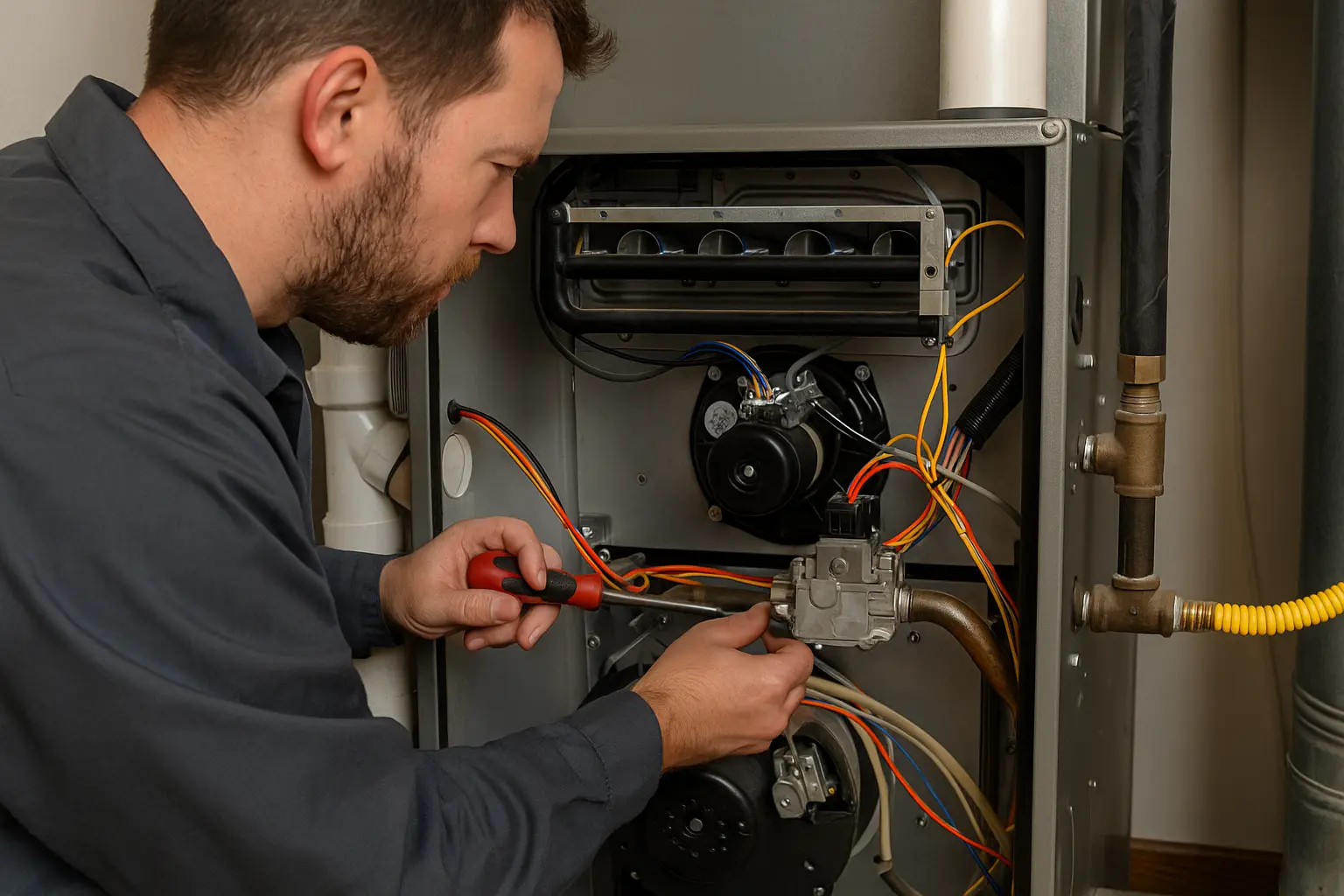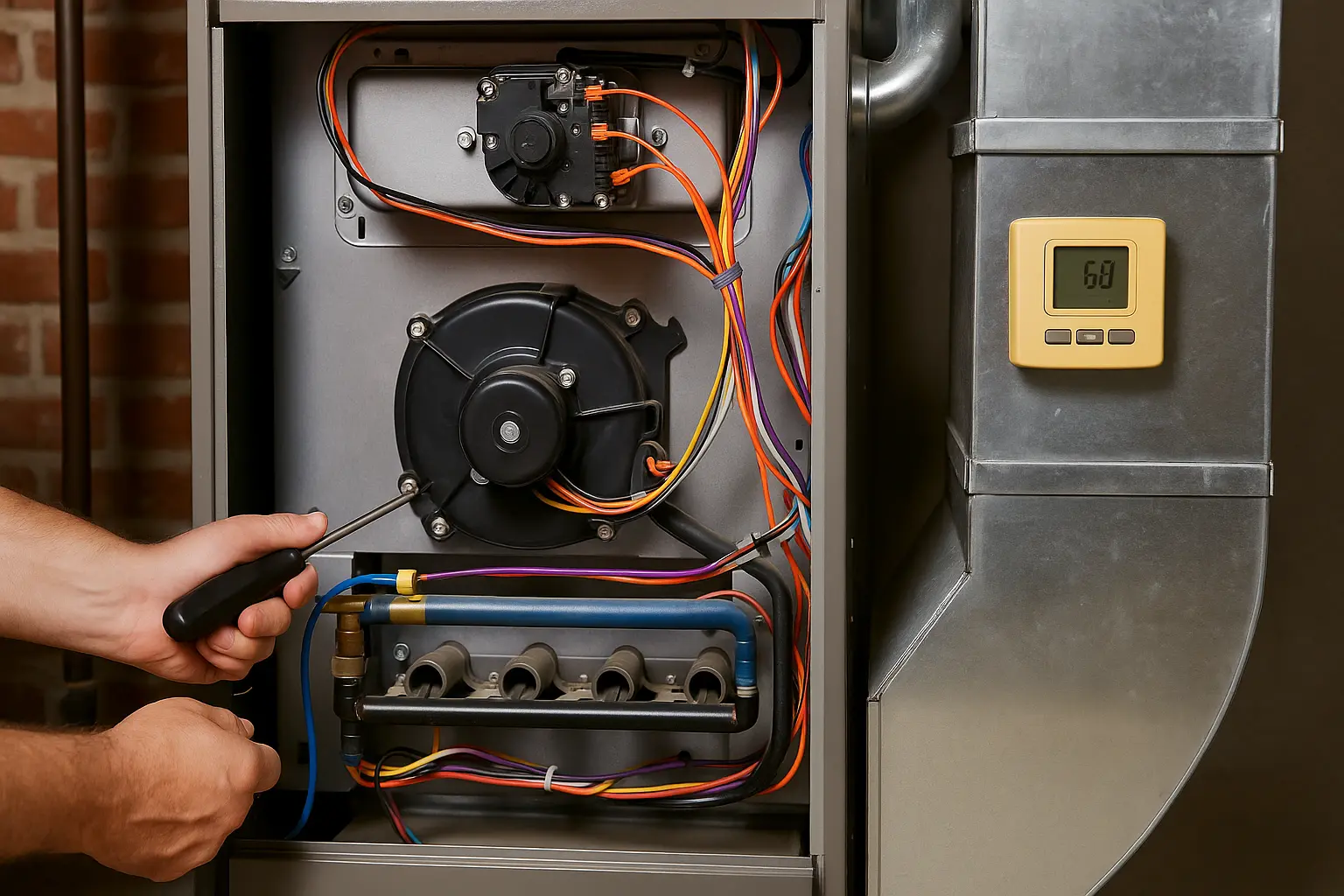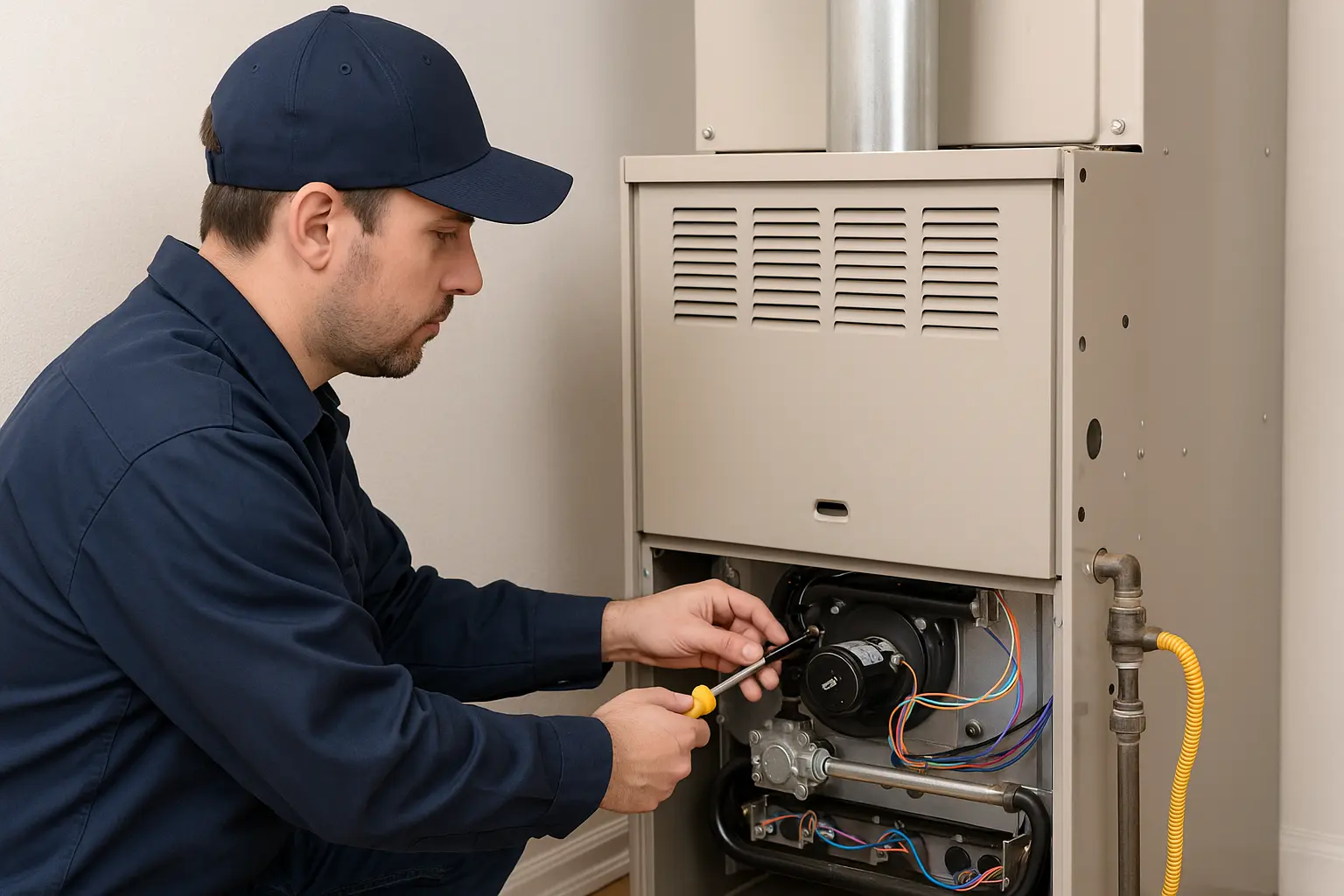
Furnace not heating like it used to? Strange smells or weak airflow? Don’t panic, most furnace problems can be repaired quickly and affordably if caught early. Knowing what to watch for can save you from a cold house, high energy bills, or an expensive system replacement.
Let’s walk through the most common furnace repair issues, what causes them, and how to fix them, plus when it’s best to call in a licensed HVAC professional.
Why Furnace Repairs Are Often Better Than Replacement
Furnaces can last up to 20 years with proper maintenance. Replacing one can cost thousands, while most repairs are far more affordable. Staying on top of small issues, before they grow into bigger problems, can extend your furnace’s life and save you money in the long run.
4 Common Furnace Problems (and How to Handle Them)
1. Dirty or Worn-Out Air Filters
The Problem:
Clogged filters block airflow, forcing your furnace to work harder and reducing efficiency. They can also circulate dust, allergens, and debris into your home.
The Fix:
Replace disposable filters every 1–3 months, especially during heavy-use seasons like winter. If you're unsure what type you have, a technician can recommend the right filter for your system.
Signs of trouble:
- Reduced heat output
- Dusty air or worsening allergies
- Strange noises from your vents
2. Broken Blower Motor or Components
The Problem:
The blower is responsible for pushing warm air through your ductwork. If it stops working, your home won’t heat properly.
The Fix:
Call a professional to inspect the blower assembly, including the fan motor, belts, and electrical connections. These parts may need cleaning, lubrication, or replacement.
Signs of blower issues:
- Cold air blowing from vents
- Furnace runs but no airflow
- Rattling or whirring noises
3. Malfunctioning Thermostat
The Problem:
Sometimes your furnace is fine, but the thermostat is not sending it the right signals. A faulty thermostat can cause inconsistent heating or unexpected system cycling.
The Fix:
Check thermostat batteries, settings, and wiring. A technician can test and recalibrate it or install a new programmable thermostat for better energy control.
Symptoms to watch for:
- Inaccurate indoor temperature
- Furnace turning on/off at the wrong times
- Unresponsive thermostat screen
4. Strange Smells or Gas Leaks
The Problem:
A brief smell when turning on your furnace for the first time each season is normal. But persistent or foul odors could signal mold, burnt wiring, or dangerous gas leaks.
The Fix:
Call an HVAC professional immediately. Gas odors or metallic smells are urgent issues that should never be ignored. Shut off your furnace and leave the home if you suspect a gas leak.
What to sniff out:
- Musty/mildew smells (possible mold)
- Rotten egg smell (gas leak)
- Burning metal or plastic smell (electrical issues)
When to Call for Professional Furnace Repair in Denver, CO
While changing filters or checking thermostat settings can be DIY tasks, most furnace issues should be handled by a licensed HVAC technician. They have the tools and training to safely inspect your system, diagnose issues, and make lasting repairs.
At Gale Force Heating and Air, we offer fast, honest, and affordable furnace repair services in Denver. Whether you’re facing low heat, weird noises, or system shutdowns, we’ve got you covered.
Don’t wait for a full breakdown. Call today for a free estimate and get your heat—and peace of mind—restored.






